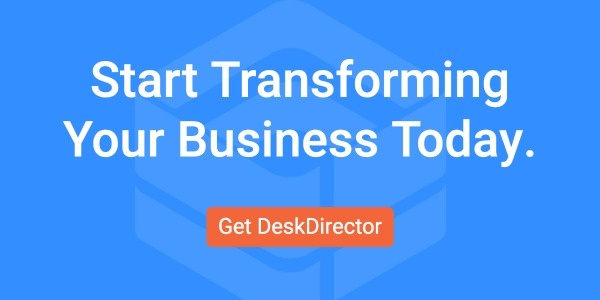Over a third (37%) of business users believe their organization needs to justify what it spends on IT.1 But given that many end-users still think of IT Service Management (ITSM) as a single business area, it is difficult to have a reasonable conversation about the processes and relative ROI of IT.
The truth is ITSM is a series of separate-but-related processes which cover a range of IT needs – and each of them has its own costs, challenges and potential to impact the business.
This article explores four of the most important ITSM processes and uses research from Axios to benchmark performance in each of them.
Expect to learn:
- Why it is essential to understand ITSM as a series of separate but connected processes
- Which ITSM processes are most widely adopted
- How your organizations can solve problems and deliver higher ROI from each key ITSM process
What Are ITSM Processes?
The concept of ITSM has been around for several decades, but the role of IT within most organizations has evolved during that time. As a result, a range of discrete ITSM processes has evolved to deliver targeted services and support specific IT needs – each with its own goals and best practices.
However, every organization uses a different set of processes, and has achieved different results with them. These results reveal common challenges and solutions for each area of ITSM, and that is why we will now explore a handful of key ITSM process benchmarks.

Four Essential ITSM Process Benchmarks for 2024
1. IT Service Desk
What is an IT Service Desk?
The IT service desk is a central point of contact for all IT-related issues. Whether users are struggling to access their emails or concerned that their computer has been infected with a virus, they can report their problem to the service desk and receive information or assistance to resolve the complaint.
Performance Benchmarks for Service Desks
Given that the concept of a service desk has been around for over twenty years, it’s unsurprising that it is the most popular ITSM process, with 89% of organizations currently using them. But just 52% of those teams say the service is “working well”.
Why are so many services desks still not meeting users’ expectations? It is likely a combination of factors, including low adoption rates, slow ticket resolution speeds and the fact many organizations are tied to legacy systems that don’t make use to new technology that can remove inefficiencies and automate repetitive processes.
2. Incident Management
What is Incident Management?
Incident management is a process concerned with restoring IT systems to operation when there is a disruption to service. The goal is to minimize downtime and the impact of outages on business performance, and this is usually assessed against a definition of “normal service” outlined in a service level agreement (SLA).
Performance Benchmarks for Incident Management
IT downtime can be highly costly and disruptive to modern organizations, which explains why incident management is tied with service desks as the most widely adopted ITSM process (89%). However, the process is even less effective than service desks – with less than half (49%) of leaders saying their incident management needs work.
A few factors are to blame for these issues, including the inability to predict IT issues and the growing volume of cyber threats organizations face. But the primary challenge for most incident management processes is the ability triage issues to ensure the right problems are prioritized – and therefore solved before they inflict unnecessary damage on the organization.
This is reflected in the fact that, while a larger proportion of big organizations have adopted an incident management process, smaller organizations are more likely to say theirs is working well. Put simply, the more complex, manual effort is involved in incident management, the less likely it is to achieve its purposes.
3. Change Management
What is Change Management?
Change management is a process designed to enable smooth adjustments to your IT system. Whether you need to give a new employee access to specific documents or adjust the permissions to edit your project management software, there must be a standardized approach that keeps the system safe, ensures compliance and makes the transition smooth and efficient.
Performance Benchmarks for Change Management
While the majority (84%) of organizations have a change management process, there are still many that don’t. Worse still, just 36% of those currently using change management report that it is working well.
One potential explanation for this poor performance is the use of outdated change governance policies and technologies. A recent Forrester report noted that many companies still use change frameworks designed in the 1990s – suggesting that modernizing your ITSM system and approach could be the key to improving change management.
4. Self-Service Catalog
What is a Self-Service Catalog?
A self-service catalog enables end-users to access key information and guidance directly – empowering them to solve their own IT problems. This can be a major source of efficiency and end-user satisfaction, freeing service desk employees and techs to focus on issues that require their expertise.
Performance Benchmarks for Self-Service Catalogs
Slightly over two-thirds (69%) of organizations currently offer a self-service catalog, but just 29% say it is working well. This could be down to a number of factors, including:
- An inability to keep up with the speed at which new technology appears
- A lack of consistent guidelines to implement a service desk
- A lack of resources to develop content that covers all relevant areas
But there is another challenge at play: the sheer complexity of delivering any ITSM process at scale throughout an organization. And this challenge extends to every ITSM process we’ve covered here – which is why enterprise service management (ESM) has grown in popularity over the last few years.
How Enterprise Service Management Help You Outperform Competitors
The concept is simple: while traditional ITSM offers a series of discrete services, an ESM system brings all these processes together in a single platform. With greater visibility and control over each process, ESM enables you to extend ITSM beyond just technical issues to support larger business objectives across multiple departments.
However, making this a reality requires a powerful centralized platform – and that’s exactly what DeskDirector delivers. From automating workflows to integrating ticketing into your Microsoft environment, the platform helps leading organizations resolve IT issues 4x faster and increase ticketing adoption by 20%.
Want to see it in action?
1. https://itsm.tools/itsm-statistics-does-it-know-the-business/









